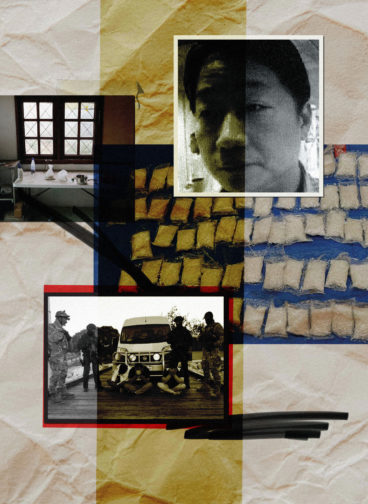
The Company Man
Tse Chi Lop, the suspected ringleader of a $21-billion crime syndicate, may be the world’s most innovative drug lord. And Toronto was his training ground
Tse Chi Lop doesn’t look like the biggest drug lord in history. He looks like a bedraggled, exhausted, late-middle-aged trader in commodities, which is exactly what he is. Tse’s commodities just happen to be high-margin, addictive, illegal drugs—heroin, ketamine and methamphetamine. Tse runs a drug syndicate known to law enforcement as “Sam Gor,” Cantonese for “Third Brother,” and to its members simply as the Company. The United Nations Office on Drugs and Crime estimates that Sam Gor’s annual revenue could be as high as $21 billion, the same as Citibank’s.
Practically every newspaper in the West has described Tse Chi Lop as Asia’s El Chapo. The comparison could hardly be less accurate. Joaquín “El Chapo” Guzmán, the leader of Mexico’s Sinaloa Cartel, has claimed personal responsibility for up to 3,000 murders in a drug war that took some 300,000 lives. That is not Tse’s way. He achieved the size of Sam Gor not by murder and torture, but by industrializing his business, reducing the cost per unit, providing an excellent product at a fair price, and establishing well-maintained networks of key partnerships. There’s also the question of scale. El Chapo’s cartel was worth, at its peak, $3 billion—a fraction of Sam Gor’s value.
Toronto taught Tse his business. The seeds for what would become the world’s largest drug empire were planted during his days surviving what police still remember as the “wild wild west” of the heroin glut in the late ’80s and early ’90s. Insofar as a man as cosmopolitan and as mobile as Tse Chi Lop has a home, Toronto is his.
Tse’s career reflects the changing nature of crime, and of the methods of synthetic drug manufacture that are rendering traditional police practices null, but it also reflects the changing nature of business in general. Traditional organized crime was a 20th-century affair. Sam Gor is pure 21st-century innovation. Its success comes down to technological innovation, relentless focus on customer experience, and mastery of globalized logistics. Tse Chi Lop is much more effective—and dangerous—than El Chapo. He is the Jeff Bezos of the drug trade.
From early in his career, Tse Chi Lop was an innovator. He was born in 1963 and grew up in Guangzhou in Guangdong province, the mainland neighbour to Hong Kong. When he was 25, he moved to Canada, part of the wave of emigration before Hong Kong’s transfer of sovereignty. Tse brought his fiancée with him, and his parents soon followed. He and his wife had children in Toronto, first a daughter, then a son. He also got decent jobs, working for Fujifilm and Kodak.
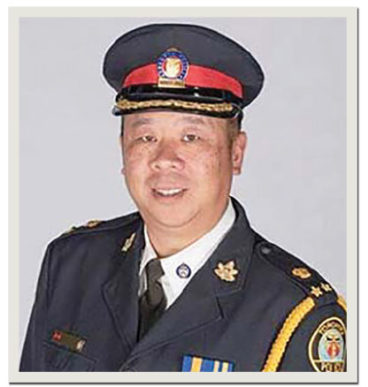
Back then, Toronto was a cauldron of competing Asian criminal organizations, including a group of Vietnamese gangsters supported by Born to Kill from New York City, and the Boston-backed Fukienese, all fighting for territory. Maclean’s called the shocking violence of the time “Terror in the Streets.” In 1990, Peter Yuen, now a deputy chief of the Toronto Police Service, was a detective constable working undercover during the height of the violence. “You had gun battles, 15 rounds at the corner of Dundas and Spadina on a Saturday afternoon,” Yuen says. One night, he snuck into an illegal gaming house. Four gang members burst in, taking customers’ jewellery and wallets along with the house’s money. They found Yuen’s police badge on him, so they beat him until his shirt was soaked in blood. One thief put a .45-calibre automatic in his mouth, another put a .357 magnum to his head. He heard the click of a hammer, and the guys fled. A forensic test revealed the gun had misfired. It is pure fluke that Yuen is alive today. “It was like watching a triad movie,” he says. “And the cops were just like dogs, too. We wanted to tell them, ‘We own these streets.’ ”
At that time, Tse belonged to the Big Circle Boys, if belonging is the right word. He was a mid-level player, but with outsized ambitions, on the way up. The BCB were a collective of international apex criminals who’d emerged out of Guangzhou in the 1960s. Triads or the mafia or biker gangs or Japanese yakuza share certain traits. They have formal hierarchies with membership; they wear uniforms; they undergo initiation rituals; they control territories and they control the use of their names. Some Chinese triads have been known to require 36 separate oaths. Mafia families do not allow non-members to use their name without permission; if you call yourself a member of the Gambino crime family, you’d better be one. None of this applies to the BCB. They’re basically just colleagues—there’s no strict hierarchy, no codified set of rules. They’re criminals and they’re organized, but they’re not organized crime.
David Au, a former sergeant in the RCMP specializing in Asian organized crime, explains that traditional gangs, like the Hells Angels, are like marbles in a glass jar, with every marble in its own position. “That jar is in the middle of the table, and around the table are the police investigators, and they can study the jar of marbles. And by studying this jar of marbles, you see where every marble sits.” In Au’s metaphor, the BCB is the jar turned over, with all the marbles bouncing around, constantly in motion. Anyone on the street can call themselves a Big Circle Boy. As a police officer, how do you know you’ve got who you think you’ve got? When you’ve broken up a cell, what have you broken up? How do you infiltrate an organization that breaks up and reforms for every project?
These radical criminal businessmen began as Communist partisans and Red Guards during the Cultural Revolution, and were sent to Guangdong province in southeast China for re-education in the 1960s and ’70s. Some later fled to Hong Kong, either across the mountains or by swimming 12 kilometres across Deep Bay, with many drowning en route.
Unlike local Hong Kong gangs, the BCB had paramilitary training, and by the late 1970s they were famous for street battles with local police using hand grenades and AK-47s. They regularly robbed jewellery stores and banks. Hong Kong police identified the new brand of Guangzhou criminals as Big Circle Boys because Guangzhou, on their maps, was a big red circle. Within a few years, the Guangzhou criminals were spreading out from Hong Kong to the U.S., South America, Thailand, the Netherlands and, later, Canada.
Once they were in Canada, however, the BCB discovered that their old criminal methodologies didn’t work in their new country. They didn’t understand the systems well enough. They couldn’t rob a bank because they didn’t know how the money flowed into banks. They couldn’t rob jewellery stores either, because unlike Hong Kong, Toronto operates mostly on credit instead of cash.
Bereft of options, they started at the bottom: pickpocketing. But they quickly realized that the credit cards and IDs in the wallets they stole were more valuable than the cash, if exploited correctly. They used the IDs for human smuggling, converting real passports and cards into flawless fake ones. They used the credit cards for fraud, flattening the original number on a stolen card and embossing a new one, often provided by waiters who’d swipe cards twice, once for the actual restaurant bill and a second time to keep a record of the number so they could sell it. Soon, they’d scaled the credit card racket, forging between 10,000 and 30,000 cards at a time through their Chinese manufacturing connections. The BCB are one of the reasons you have to use a password for large purchases on your credit card today.
These were Tse Chi Lop’s people, massively adaptable global citizens with an instinct for big money. While other criminal organizations in Toronto were murdering each other over minuscule sums, the BCB created whole new enterprises. Alex Chung is a lecturer at Oxford University who wrote his dissertation on the BCB in Canada. “They learned quickly that violence was too costly,” Chung says. “Canada is, to them, very orderly.” They reacted to that orderliness by educating themselves in the realities of the marketplace rather than killing their enemies. The BCB hired “sifu,” a Cantonese term that loosely translates to “masters” but corresponds in practice to consultants. “Whenever they wanted to get into a new area, a new market, a new trade, they would hire someone to teach them how to get it done,” Chung says. To learn the credit card business, they hired manufacturers. For the drug trade, they hired chemists. They brought an industrial approach to organized crime. And Tse would become their greatest innovator.
In the 1990s, Tse helped establish one of the most impressive drug shipment networks in history. He and his colleagues observed a couple of basic facts: it was easy to smuggle drugs from Asia into Canada, it was relatively easy to smuggle drugs across the border from Canada into the U.S., and the U.S. was the biggest narcotics marketplace in the world. So, if the right connections could be made, there was a chance to build a stable logistical chain to smuggle heroin through Canada.
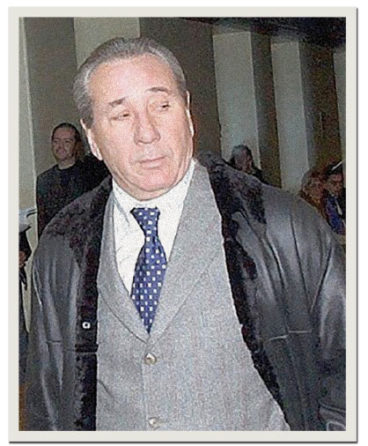
At the time, the Rizzuto family in Montreal, an infamous Canadian mafia organization, had an established cocaine network, buying directly from Colombian cartels, using Hells Angels as distributors in Canada, and shipping to the States. The Big Circle Boys came up with the idea to piggyback their heroin trade on the Rizzutos’ cocaine routes. And the Rizzutos agreed.
The BCB imported the highest-quality heroin from Thailand, grown in the poppy fields of the Golden Triangle. From Thailand they shipped it to Vancouver, then Toronto, and then into the United States via the Rizzuto family’s distribution network. “The BCB dominated the drug trade by being efficient and out-competing others,” Chung says. They were flexible, always adaptable to the market.
Tse was part of the group who negotiated the deal, and by 1997, he was the person sourcing all the drugs from Asia. Mark Calnan, an FBI agent who tracked Tse for years, says networking was the key to Tse’s success. “He had great skills in diplomacy and he thought outside the box. The fact that he used Sicilians to transport heroin—it takes a lot of guts.” The Rizzutos’ network included the Bonanno family on the American side and the ’Ndrangheta in Europe. Tse learned from the collaborative spirit of the Rizzutos. The drugs moved down the eastern seaboard, hidden in trucks. They went from Toronto to a barber shop on Long Island run by Emanuele LoGiudice, known as Manny the Barber, to be sold on the streets of New York, then down the east coast to Florida.
The BCB earned hundreds of millions of dollars in the deal, and they enjoyed their lavish lifestyles, says Chung. Investigators surveilling the BCB used to complain about having to eat out seven days a week at nice restaurants to observe them. Sometimes, a handful of BCB members would take over an entire restaurant for the night and pay the proprietor what they would have earned if the place was full. Tse was one of those people. He moved with movie stars, and it was a great era for Chinese movie stars coming to Toronto—celebrities like Anita Mui, the Madonna of Hong Kong. But with success in the drug trade comes notoriety, and eventually the police hear your name. It’s your name that breaks you.
The FBI knew that Canada was the source of most of the heroin in the United States, and they wanted to know who was bringing the drugs in. That question sparked a multi-year collaboration between the FBI, the RCMP and local police in Toronto, Montreal and Hong Kong. The investigation began in 1992 with the arrest of a street dealer on a corner in the Bronx. They soon learned his supplier was a man named Yong Bing Gong, known as Sonny, who was orchestrating an extensive trafficking business from prison, where he was serving a life sentence for abduction and extortion. The investigation was dubbed Sunblock as a kind of portmanteau of “Sonny” and the cellblock where he lived.
Operation Sunblock worked its way through traffickers on both sides of the border, from Paul Kwok, a Scarborough resident who first met Sonny in prison and who would facilitate the transport of heroin across the border, to Manny the Barber on Long Island. The operation resulted in dozens of indictments, including those of Kwok and Gong in 1996. The name the cops kept hearing over and over again, as the ultimate source of the connection, was Tse Chi Lop. By 1998, he was the last man standing.
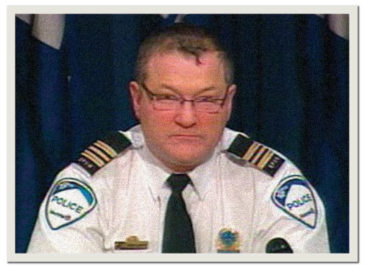
The problem was, Tse was in China. The United States had no extradition agreement with China, but it did have one with Hong Kong. Mario Lamothe, a detective sergeant with the Montreal police specializing in Asian organized crime, was key to securing Tse’s capture. It was Lamothe’s informants who told the cops when and where Tse was going to be in Hong Kong. “I was a nervous wreck,” says Mark Calnan, who was also involved in the arrest. “I’d been in enough drug operations to know that half the time, stings don’t go right. I pictured myself going home empty-handed.” Fortunately, Lamothe’s tipster came through. In August of 1998, Tse turned up in a restaurant in the Tsim Sha Tsui neighbourhood, where Hong Kong police arrested him.
Big Circle Boys don’t argue with the police. They’ve been known to shake the hands of cops who catch them, and offer congratulations for their capture. During the interrogation, Calnan could tell right away that Tse was different from other career criminals. “You can spot some criminals a mile away because of the way they dress, the way they carry themselves. They want to look like a gangster, like Scarface. I always felt that those were wannabe gangster types,” Calnan says. “Nobody is more legit than Tse Chi Lop. When I saw him, he could have been the manager of the local bank. He carried himself like a gentleman.” Your mother was right: manners count, even between drug dealers and the police.
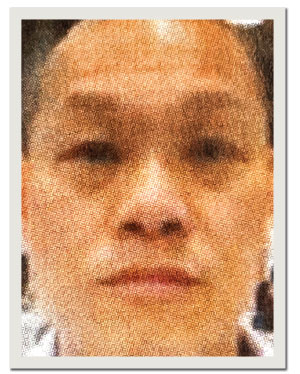
After his arrest, Tse struck a deal, pleading guilty to a single count of conspiracy to import heroin into the United States in exchange for a nine-year prison sentence, which he served at Elkton Federal Correctional Institution in Ohio. During his time in prison, Tse asked to be sent back to Canada, where his family were living. In a plea for mercy, he explained that his son had a lung condition, his parents were ailing and his wife was overwhelmed. He vowed to return to Toronto to open a restaurant. The judges rejected his requests. But Tse didn’t waste time in prison. He made a whole new array of connections, including Lee Chung Chak, known as John, another cross-border drug smuggler and Hong Kong citizen.
When Tse was released in 2006, he moved back to Toronto, where his family still lived, but found he had outgrown the city. His Rizzuto connections were mostly still in prison or involved in costly, bloody personal vendettas. Hong Kong had reverted to Chinese control, and China had joined the World Trade Organization. Meanwhile, by the mid-aughts, the global market for heroin was shrinking, and the market for synthetic drugs was spiking.
Tse recognized the opportunity synthetic drugs in Asia represented, and not just in the size of the market, which was five times that of North America. Synthetic drugs were also much cheaper to produce. It takes thousands of farmers to generate a tonne of heroin. It takes 10 guys in a lab to make a tonne of meth. The materials—pseudoephedrine, anhydrous ammonia and red phosphorus—are extremely cheap, less than $1,000 a tonne in some cases, and widely available in many parts of Asia. Tse recognized that he could change the entire business model of illegal drugs.
By 2011, Tse and his family had left Toronto and moved to Hong Kong. Around this time, police believe, he teamed up with Lee Chung Chak to form the meth syndicate that would become Sam Gor. One of Tse’s major innovations, which defined his organization and overturned the structure of the illegal drug industry, was guaranteed delivery. If a dealer paid for the drugs, he’d receive them. If they were seized, Sam Gor would replace them at no cost to the buyer. Guaranteed delivery was possible because the production costs were negligible. This was the idea on which Tse built an empire.
In the early days of Sam Gor, Tse did what he does best: solving people’s problems and bringing them together. Hong Kong and Macau’s three biggest triads—14K, Wo Shing Wo and Sun Yee On—are enormous, powerful, violent criminal organizations; 14K alone has some 20,000 members. These triads are rivals and often go to war, but Tse united them and got them to co-operate on the drug trade. He also brought in members of the Big Circle Boys, the Bamboo Union out of Taiwan, and even biker gangs from Australia. This coordination was an enormous feat of criminality—to take army-size groups of violent criminals and get them to work together.

Guaranteed delivery was the source of Tse’s power. Why would Australian biker gangs struggle to bring in chemicals in bulk (which are much harder to buy in Australia), manufacture meth, then compete to make the best product? Sam Gor would supply the highest-quality meth, sell it to them for a reasonable price and guarantee a risk-free delivery. In one sense, the bikers and the triads were losing control. They were depending on a supplier. On the other hand, an ocean of uncertainty and risk had been removed. It’s like Amazon. Why do you, and everyone you know, use Amazon even though you don’t want to, even though you read nightmare stories about working conditions at their warehouses and you want to support local businesses? Because if you order a book from Amazon, it doesn’t cost any more but it arrives at your door, sometimes the same day. And if there’s a problem with your delivery, they fix it. After a while, you start to think of Amazon less as a retail option and more as a utility. In the 21st century, the way to conquer people is by giving them what they want.
In return for its guarantees and risk reduction, Tse used the triads and biker gangs to scale his business. As the syndicate grew, Tse was the command centre for the whole operation, supervising production, storage, transportation and distribution. The smuggling networks in Asia were much simpler to navigate than those in North America. Dozens of Sam Gor–affiliated labs mass-produced methamphetamine in the Myanmar hills, each with a small team. From the Golden Triangle, smugglers walked the drugs across the border into Thailand; patrollers regularly killed the mules, but there was an endless supply of desperate people, just as there was an endless supply of meth.
Sam Gor’s signature shipping method was to hide the drugs in loose-leaf green tea packages, each one neatly holding about a kilo of meth. The branding was strong enough that rival gangs sometimes used the green tea packages to ship their own meth. A kilo of methamphetamine would cost dealers in Myanmar $4,000. It would then sell for $200,000 in the streets of Australia. Only one out of 15 shipments had to arrive for Sam Gor to break even. Every shipment over that was pure profit.
Customer experience was not Sam Gor’s only field of innovation. The organization also specialized in money laundering. Since gambling is illegal in mainland China, Chinese citizens who wanted to gamble elsewhere needed to disguise their transaction. Often, gamblers were able to do this through junket tour operators. There are hundreds of these businesses in Asia, many publicly traded companies, and they work with casinos to bring in big spenders, offering the usual amenities—private flights, comped hotels and, most critically, access to cash. The casinos extend credit to the junket operators. Some companies were already using this system to launder money, but Sam Gor brought together a group of junket-tour operators to commit this fraud on an industrial scale, just as it had done with meth producers. A gambler deposits money in a junket operator’s account in one country, then accesses it in another. The system allows the movement of money without the actual movement of money or use of a traditional banking system. One middleman working for a junket operator claimed that $2 billion worth of drug money flowed through Crown casinos in Melbourne. In February, an Australian government inquiry released a report in which commissioner Patricia Bergin found Crown had been facilitating money laundering. The chief executive has resigned, as have several other company directors. The inquiry declared Crown unfit to hold a gaming licence in New South Wales.
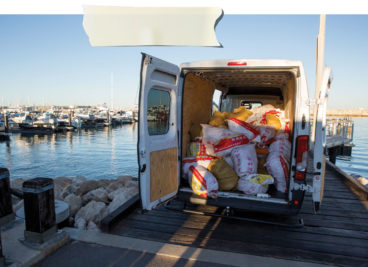
Gambling was also a big part of Tse’s lifestyle. He lost 60 million euros one night playing the tables in Macau—although how much did he gain from money laundered by the trip? He was famous for holding lavish birthday parties each year at five-star resorts, flying family and friends from all over the world in private jets. At the height of Sam Gor, Tse regularly travelled with a team of eight Thai kickboxing bodyguards.
By the late 2010s, Sam Gor accounted for 70 per cent of Australian meth. It controlled somewhere between 40 and 70 per cent of the $90-billion Asian market, dominating the trade in the Philippines, South Korea and Japan. The Company kept its heroin network as a legacy, but methamphetamine was the core business—and the supply was so plentiful that prices dropped dramatically. In Cambodia, the price of a tablet of meth went from $5 to $2 (U.S.). In Thailand, it went from $8 to $2.25 (U.S). According to the United Nations Office on Drugs and Crime, the Asia-Pacific methamphetamine trade increased fourfold between 2014 and 2019. For the second time, Tse Chi Lop had changed the nature of the marketplace. And this time, 20 agencies would have to work together to catch him.
In November of 2016, a Taiwanese man named Cai Jeng Ze walked nervously through Yangon International Airport in Myanmar, en route to Taiwan. He was stopped by airport police, who allegedly found 80 grams of ketamine taped to each of his thighs and arrested him. When anti-narcotic agents hacked into his two iPhones, they found what one officer described as an “Aladdin’s cave of intel”: a huge photo and video library, texts, calls and social media conversations. In one of the photos, officers saw a face they recognized from previous drug surveillance: it was Tse Chi Lop.
The Australian police spearheaded the pursuit, because meth in Australia had become, under Tse, a grotesque epidemic. Australia has the highest use of methamphetamine in the English-speaking world: seven per cent of the population have used it, compared to 0.4 per cent of Americans. In 2019, Australians spent $8.5 billion on 11.5 tonnes of meth, two-thirds of it cooked in the Golden Triangle. The total number of users in Australia tripled between 2012 and 2017.
After discovering the material on Cai’s phones, Australian authorities put his associates under surveillance and intercepted their shipments. One of these associates was a 44-year-old Australian named Joshua Joseph Smith, who had paid $350,000 for a fishing charter boat called the Valkoista, despite not having a boating licence. In July of 2017, he was given GPS coordinates for a mothership in the Andaman Sea, where he picked up many packages of meth and returned to the remote port of Geraldton, where the drugs were unloaded into a van. By observing Smith, police discovered that his co-conspirators included members of the Hells Angels and the Comanchero Motorcycle Club, and that in August, the associates met with Sam Gor representatives in Bangkok. In December of that year, the Valkoista again rendezvoused with a mothership in international waters. Two days later, at 2 a.m., the Valkoista arrived in Geraldton. For eight minutes, bulging bags of meth were loaded into a van by six men. This time, the police pounced, moving in to seize a total of 1.2 tonnes with a street value of $1 billion—the country’s largest-ever seizure of methamphetamine.
Just as the authorities did in Operation Sunblock, the Australian investigators and their colleagues moved up the chain of command: from the Sam Gor members the Australians met in Bangkok, to Cai Jeng Ze, the man allegedly caught with ketamine, to Lee Chung Chak, Tse’s right-hand man. What got Tse in the end was a Reuters story describing him as Asia’s El Chapo. The reporter had unprecedented co-operation from police, who are usually reluctant to speak to the media about ongoing cases. But talking to Reuters was a smart gamble. Tse Chi Lop’s business requires secrecy. When his name and photograph became public, his world started falling apart.
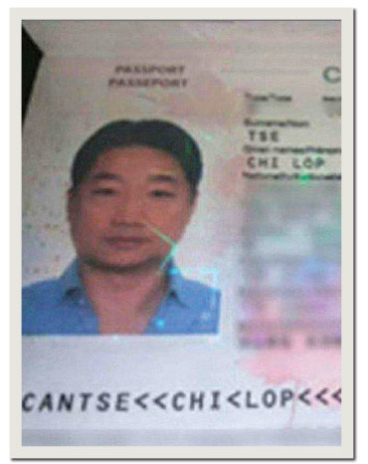
In 2o19, after the Reuters piece came out, the Australian police posted an international warrant for Tse’s arrest with Interpol. His huge network had always protected him, but suddenly Company members began to distance themselves. He ran to Taiwan because connections there gave him a certain amount of protection, but international pressure led the government to expel him. Last January, with Interpol closing in on him, Tse got on a flight back to Canada—but there was a stopover in Amsterdam. The moment he stepped off the plane at Schiphol airport, he was detained. In the end, a PR crisis brought him down.
The arrest was quiet and calm, like the man himself. There was no chase through the terminals with guns a-blazing. There were no defiant speeches. In a sleek white hallway, Tse Chi Lop turned to the wall while Dutch police cuffed him. So far, he’s only been charged on one count of drug trafficking, linked back to information obtained in a 2013 wiretap.
Tse is still in prison in Amsterdam, fighting extradition to Australia. He has promised to take the struggle all the way to the Dutch Supreme Court if necessary. Tse didn’t respond to interview requests for this piece, but through his lawyer he has denied any wrongdoing and says he would not get a fair trial in Australia, claiming the Australian authorities engineered his expulsion from Taiwan so he could be detained in the Netherlands. “Mass media are calling me a drug kingpin but that is not true,” he has said.
Tse has run two of the largest drug networks in history, on different continents and in different decades. This makes him unique. In the memories of the people who pursued him, he is a massive contradiction: a man who has arguably done more to spread human immiseration than any other person on the planet but whom everybody seems to like. A genius in the business of illegal commodities whose capture will make little to no difference to the marketplace. He’s a node on a network. There are many other people who can replace him. Ultimately, he is the ideal middleman, positioning himself perfectly as a key interceptor in a world grown radically interconnected.
The war on heroin was never winnable. The war on synthetic drugs is even less so: it makes no difference how many criminals are arrested or how many drug shipments are seized. There’s always more of both. Crime only diminishes when demand declines, or when governments take over supply. Peter Yuen says the legalization of casinos killed Asian organized crime in Toronto. He estimates there was an 80 per cent decline in street-level crime when underground gaming houses dissolved.
Tse rose to prominence as a criminal disciple of open multicultural hypercapitalism. David Au of the RCMP says that’s what sets Canada apart. “When I used to go down to the western U.S., every group was very siloed,” Au says. “The Chinese would only work with the Chinese. The Vietnamese would only work with the Vietnamese. The African-Americans among themselves, Latinos among themselves.” The inter-ethnic collaboration here is distinctly Canadian. “Other jurisdictions find it unique,” Au says.
What gave traditional organized crime its strength in the past—the violence, the control of territory, the ethnic loyalty and defined hierarchies—are the heart of its weakness in the present. Tse had a better system. Instead of ethnic loyalty, transnational and inter-organizational co-operation. Instead of territory, logistics. Instead of hierarchy, metrics. Instead of centralized control, connections. Tse Chi Lop is easily the most significant criminal in Toronto’s history, and he represents, in an entirely diseased way, a perverse triumph of the city. His vast criminal organization flourished through open-mindedness and entrepreneurship, by creating markets and exploiting them in a spirit of eager globalization and cosmopolitanism. He is one of capitalism’s grandest and most polite monsters. He is very much one of us.
This story appears in the November 2021 issue of Toronto Life magazine. To subscribe for just $29.95 a year, click here.





